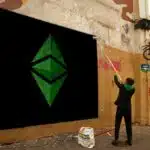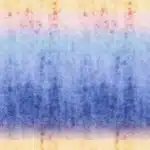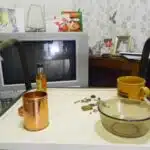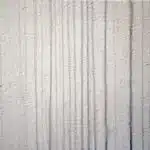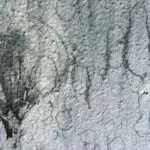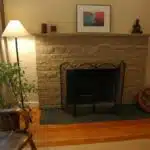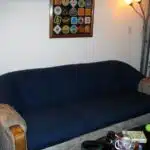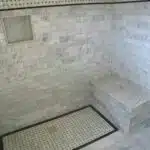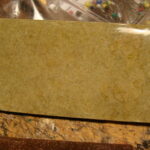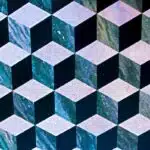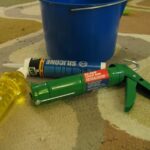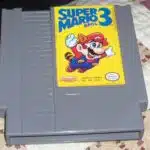As a wallpaper cleaning expert, I have come across countless homeowners struggling with maintaining the beauty and cleanliness of their wallpapers. Wallpaper is a popular choice for interior decoration due to its durability and aesthetic appeal, but it requires proper maintenance to retain its charm. Cleaning wallpaper can be a daunting task, especially if you are not familiar with the right techniques. In this article, I will guide you through the steps on how to clean wallpaper effectively, ensuring that your walls remain sparkling clean without causing damage.
Cleaning wallpaper involves more than just wiping down stains or dirt. It requires careful consideration of the type of wallpaper material you have, as certain materials require specific cleaning methods. Additionally, it is essential to use the correct cleaning products and tools to avoid damaging your wallpaper. Neglecting these factors while cleaning could lead to discoloration or peeling off of your wallpaper, which would ruin its aesthetic appeal. Therefore, in this article, I will provide comprehensive guidelines on how best to clean different types of wallpapers using safe and effective methods that ensure longevity and maintain their overall appearance.
Understanding The Different Types Of Wallpaper
Wallpaper is a popular choice for interior decoration because of its versatility and aesthetic appeal. There are different types of wallpaper, each with unique characteristics that require specific cleaning methods. Understanding the various types of wallpaper is essential to determine the appropriate cleaning approach.
Vinyl-coated wallpaper is the most common type of wallpaper. It is durable, easy to clean, and water-resistant, making it ideal for high-traffic areas such as kitchens and bathrooms. This type of wallpaper has a vinyl layer on top of paper or fabric backing. However, it can be challenging to remove due to its sturdy composition.
Non-woven wallpaper is another popular option. It is made from synthetic materials, making it resistant to moisture and mold growth. Non-woven wallpapers are easy to install and remove since they can be pulled off in one piece without damaging the wall underneath. They also come in a variety of designs that mimic natural textures such as wood or stone. However, they are not as durable as vinyl-coated wallpapers and may tear easily during installation or removal.
When cleaning your wallpaper, it’s crucial to identify its material first before applying any cleaning solutions or techniques. Failure to do so may cause damage or discoloration on your walls. Therefore, assessing the condition of your wallpaper is necessary before starting any cleaning process.
Assessing The Condition Of Your Wallpaper
- The first step in cleaning wallpaper is to assess the damage that needs to be repaired.
- Identifying the type of wallpaper is essential in determining the best cleaning method to use.
- Wallpaper can be identified as either a coated or uncoated paper, a vinyl-coated paper, a fabric-backed vinyl, or a pre-pasted wallpaper.
- Knowing the type of wallpaper will allow you to select the appropriate cleaning products and techniques for the best results.
Assessing Damage
Identifying the damage on your wallpaper is crucial to determine the best cleaning method. Before cleaning, it’s important to assess the extent of the damage and identify its causes. Common causes of damage include water leaks or flooding, exposure to sunlight, and improper installation or maintenance. Once you have identified the cause, you can take preventive measures to avoid future damage.
Prevention techniques include using wallpaper that is resistant to moisture or sunlight, avoiding direct contact with water sources, and ensuring proper installation by a professional. Regularly inspecting your wallpaper for any signs of damage can also help prevent further deterioration in the future. If you notice any cracks, peeling edges or discoloration, attend to them immediately before they worsen.
Assessing the condition of your wallpaper requires careful observation and knowledge of common issues. Identifying causes and taking preventative measures will help maintain your wallpaper’s condition and prolong its lifespan. Remember that regular maintenance is key in preserving your beautiful home aesthetic.
Identifying Wallpaper Type
Assessing the condition of your wallpaper is an essential task that every homeowner should prioritize. One crucial aspect of assessing your wallpaper is identifying its type. Knowing the type of wallpaper you have will help you determine the appropriate cleaning method to use, as well as how best to maintain it.
Common misconceptions about identifying wallpaper type include assuming that all wallpapers are the same and can be cleaned using similar methods. However, this is not true, as different types of wallpaper require different cleaning approaches. Some common types of wallpaper include vinyl, grasscloth, fabric-backed vinyl, and foil.
While some homeowners opt for DIY cleaning methods to save money, it’s important to know when to seek professional help. Professional cleaners have the necessary expertise and tools to clean your wallpaper effectively without causing any damage. Additionally, they can identify potential issues with your wallpaper and provide recommendations on how best to maintain it in top condition. Whether you choose DIY or professional cleaning, identifying your wallpaper type is a crucial step in prolonging its lifespan and maintaining its aesthetic appeal.
Preparing For Wallpaper Cleaning
The prospect of cleaning your wallpaper can be daunting, especially if it has not been cleaned for a while. Before you start the actual cleaning process, it is essential to prepare your walls adequately. This will ensure that you do not damage the wallpaper or the wall itself during the cleaning process.
Creating a cleaning solution is an important step in preparing your walls for cleaning. Avoid using harsh chemicals that can damage your wallpaper or the wall surface. Instead, use mild detergent mixed with warm water and vinegar in equal parts. This solution is gentle enough to clean without damaging either surface. You can also opt to buy commercially available wallpaper cleaners from hardware stores.
Protecting your walls before cleaning is another crucial step in preparing them for cleaning. Before applying any cleaner, protect electrical outlets and switches by covering them with plastic wrap. Also, remove any loose dust or debris from the walls using a soft-bristled brush or vacuum cleaner. This will prevent scratches and marks on the wallpaper when you start scrubbing.
By creating a gentle cleaning solution and protecting your walls from potential damage, you are now ready to begin the actual cleaning process. However, before you embark on this next step of using tools and products to clean effectively, let us discuss how to choose the right tools and products that will suit your specific type of wallpaper best.
Using The Right Tools And Cleaning Products
- When cleaning wallpaper, the cleaning product chosen should be appropriate for the type of wallpaper being cleaned.
- Before cleaning, the surface should be prepared by removing dust and dirt, and any loose material should be removed.
- After preparation, a mild detergent or a solution of water and vinegar can be used for general cleaning purposes.
- For more stubborn stains, a solvent-based cleaner should be used, taking care to avoid using too much water.
- When cleaning the wallpaper, it is important to use a soft cloth or sponge and to avoid scrubbing as this can damage the wallpaper.
- Finally, any excess moisture should be removed by blotting with a dry cloth or paper towel to prevent water stains.
Choosing The Right Cleaning Products
As a wallpaper cleaning expert, I understand the importance of choosing the right cleaning products for your wall coverings. The first consideration to make is whether to use eco-friendly or chemical-based options. Eco-friendly products are a great choice if you’re looking to reduce your carbon footprint while also avoiding harmful chemicals that may be present in traditional cleaners. DIY options can be particularly effective, and often involve simple household items like vinegar, baking soda and water.
When comparing natural versus chemical cleaning products, it’s important to consider their effectiveness as well as any potential health risks they may pose. Natural cleaners are generally safer for both humans and pets, but they may not be as effective at removing stubborn stains or grime. Chemical cleaners, on the other hand, may contain harsh ingredients that can irritate skin or cause respiratory issues if inhaled. It’s essential to read labels carefully before making a purchase and to test any new product on a small area of your wallpaper before using it more broadly.
Ultimately, choosing the right cleaning products for your wallpaper will depend on your individual needs and preferences. Whether you opt for eco-friendly DIY solutions or commercial-grade chemical cleaners, always take care when applying them to ensure that your wallpaper remains intact and undamaged. With the right tools and products in hand, you’ll be able to keep your walls looking their best for years to come!
Preparing The Surface For Cleaning
When it comes to cleaning wallpaper, using the right tools and cleaning products is essential. However, before applying any cleaner to your wallpaper, it’s important to take pre-cleaning precautions and prepare the surface properly. This can help ensure that your walls are not damaged during the cleaning process.
One of the first things to do when preparing your wallpaper for cleaning is to remove any dust or debris that may have accumulated on its surface. You can do this by gently wiping down the wall with a soft cloth or vacuuming it with a brush attachment. It’s also important to protect any nearby furniture or flooring from potential damage by covering them with plastic sheeting or drop cloths.
Protective equipment should also be worn when handling certain cleaning products, particularly those that contain harsh chemicals. Gloves and goggles can help prevent skin irritation or eye damage from exposure to these substances. Alternatively, eco-friendly options such as vinegar and baking soda can be used as safe and effective alternatives.
In summary, taking pre-cleaning precautions and preparing the surface properly is crucial when cleaning wallpaper. From removing dust and debris to protecting nearby surfaces and wearing protective equipment, these steps can help ensure that your walls are not damaged during the cleaning process. With alternative cleaning methods such as eco-friendly options available, you can keep your walls looking their best while still being mindful of your impact on the environment.
Cleaning The Wallpaper Properly
When it comes to cleaning wallpaper, using the right tools and cleaning products is vital. However, equally important is the proper technique of cleaning the wallpaper. Common mistakes, such as scrubbing too hard or using abrasive materials, can cause damage to the surface. To avoid this, best practices should always be followed.
One of the most common mistakes people make when cleaning wallpaper is using too much water or cleaner. This can result in streaking or discoloration on the wallpaper. Instead, a gentle touch and small amounts of cleaner should be used. Additionally, it’s crucial to test any new cleaning product on a small, inconspicuous area before applying it to the entire wall.
Another best practice for cleaning wallpaper is using a soft-bristled brush or sponge to gently remove dirt and grime from the surface. Avoid using abrasive materials such as steel wool or rough cloths that can scratch or damage delicate wallpapers. Additionally, always work from top to bottom when cleaning to prevent streaking.
In conclusion, while having the right tools and cleaners are necessary for cleaning wallpaper effectively, it’s also essential to follow proper techniques and avoid common mistakes that can cause damage to your walls. By adopting these best practices and being mindful of how you clean your wallpaper, you can keep your walls looking beautiful for years to come.
Handling Water-Sensitive Wallpapers
Using the right tools and cleaning products is crucial to avoid damaging your wallpaper during the cleaning process. However, water-sensitive wallpapers require extra caution when it comes to cleaning. This type of wallpaper is more prone to damage from moisture, so it’s essential to be careful in handling them.
To avoid damage to water-sensitive wallpaper, use a dry-cleaning sponge or a vacuum with a soft brush attachment. Gently run the sponge or vacuum over the wallpaper in a back-and-forth motion, being careful not to apply too much pressure. Avoid using any liquid cleaning products as they can cause excessive moisture and damage the wallpaper.
Drying techniques are also crucial when it comes to water-sensitive wallpapers. After you’ve finished cleaning with a dry-cleaning sponge or vacuum, let the wallpaper air dry completely before placing any furniture back against it. Avoid using any heating source like a hairdryer or heater on the wallpaper as this can cause further damage by drying out the paper too quickly. By following these tips on avoiding damage and proper drying techniques, you can keep your water-sensitive wallpaper looking new for years to come.
Moving onto cleaning non-washable wallpapers requires specific techniques that differ from washable wallpapers. Despite its name, non-washable wallpapers can still be cleaned without ruining them if done correctly. The key is not using any water-based cleaners; instead, opt for dry-cleaning sponges or vacuums with soft brush attachments like before. In addition, spot-cleaning with mild detergents can help remove tough stains without damaging the paper. With these methods, you can clean non-washable wallpapers while keeping them looking fresh and new for longer periods of time.
Cleaning Non-Washable Wallpapers
Non-washable wallpapers can be challenging to clean because they cannot be easily cleaned with water or cleaning solutions. When it comes to maintaining non-washable wallpapers, prevention is key. Keeping the room well-ventilated and avoiding excessive moisture will help prevent damage to your wallpaper.
Regular dusting and vacuuming are effective ways of keeping non-washable wallpaper clean. Use a soft brush or a vacuum cleaner with a soft brush attachment to remove dust and dirt from the wallpaper surface. Avoid using abrasive materials that could scratch or damage the wallpaper.
Removing stains from non-washable wallpapers requires special care. Avoid using harsh chemicals or solvents that could cause discoloration or fading of the wallpaper pattern. Instead, try using a mild detergent solution and a soft cloth to gently rub the stain until it disappears. If this does not work, seek professional advice from an experienced wallpaper cleaner who has the expertise and knowledge required for removing stubborn stains safely.
Next, we will discuss how to remove stains and dirt from wallpaper effectively without causing any further damage to its appearance.
Removing Stains And Dirt From Wallpaper
When it comes to maintaining the cleanliness of your wallpaper, removing stains and dirt is crucial. While some wallpapers are more durable than others, stains and dirt can still accumulate over time, especially in high-traffic areas. Here are some tips to help you effectively remove stains and dirt from your wallpaper without damaging it.
Firstly, it’s important to identify the type of stain you’re dealing with before attempting to remove it. For example, oil-based stains require a different approach than water-based stains. For water-based stains such as coffee or tea spills, mix warm water with a small amount of dish soap and use a sponge or soft cloth to gently dab the affected area until the stain disappears. For oil-based stains such as grease or lipstick, mix rubbing alcohol with warm water and follow the same process.
Secondly, if you’re dealing with stubborn wallpaper glue residue on your walls, apply a mixture of warm water and white vinegar to the affected area using a spray bottle. Let this solution sit for 10 minutes before using a scraper tool to gently remove the glue residue. Be careful not to scrape too hard as this can damage your wallpaper.
Lastly, if you’re planning on painting over your wallpaper, it’s important to protect it during the painting process. Cover your wallpaper with painter’s tape around all edges and corners to prevent paint from seeping onto it. Additionally, use a primer specifically made for wallpaper before applying any paint as this will help create an even surface for painting.
By following these tips, you’ll be able to effectively remove stains and dirt from your wallpaper without damaging it. Next up we’ll discuss how to deal with grease and oil stains on your wallpaper.
Dealing With Grease And Oil Stains
The sight of grease and oil stains on a beautiful wallpaper can be disheartening. It can take away the charm of the wallpaper, making it look old and dirty. But fret not, for there are ways to deal with these stubborn stains.
To start with, preventing future stains is always better than cleaning them up. Keep your kitchen area clean and organized. Make sure that your stove and oven are free from any spills or splatters. Use a splatter screen while cooking to prevent oil from popping out of the pan. This way, you can keep your wallpaper clean and fresh for longer.
However, if you do end up with grease or oil stains on your wallpaper, there are natural cleaning methods that you can use. One such method is using baking soda. Mix baking soda with water to create a paste-like consistency and apply it on the stain. Let it sit for 15-20 minutes before wiping it off gently with a damp cloth.
Next up: eliminating mold and mildew on wallpaper.
Eliminating Mold And Mildew On Wallpaper
Mold and mildew can cause significant damage to wallpaper, so it is essential to remove them as soon as possible. To remove mold and mildew from wallpaper, it is recommended that a mild detergent solution be applied and left to sit for a few minutes before wiping down the surface. Cleaning wallpaper with disinfectants can be a more effective option, as it will not only remove the mold and mildew but also help prevent future growth. Disinfectants should be used in accordance with the manufacturer’s instructions on the label in order to ensure the safety of the wallpaper.
Removing Mold And Mildew
Mold and mildew are common problems that affect wallpaper. They appear as black or green spots on the surface, emit a pungent odor, and pose health hazards. To remove mold and mildew from your wallpaper, you can use natural remedies or seek professional help.
Using natural remedies is an effective way to eliminate mold and mildew without exposing yourself to toxic chemicals. You can mix equal parts of vinegar and water in a spray bottle and apply it directly on the affected area. Let it sit for 10-15 minutes before wiping it off with a clean cloth. Alternatively, you can use baking soda by mixing it with water to form a paste, applying it on the stains, and letting it dry overnight before brushing it off.
If the mold and mildew persist despite your best efforts, seeking professional help is recommended. Professional cleaners have specialized equipment and expertise to handle tough cases of mold infestation safely. They also use non-toxic solutions that are environmentally friendly and safe for your health.
In conclusion, removing mold and mildew from wallpaper requires a proactive approach that involves using natural remedies or seeking professional help. By following these tips, you can restore your wallpaper’s beauty while ensuring your family’s safety. Remember to take preventive measures such as proper ventilation, regular cleaning, and avoiding excessive moisture in your home to prevent future occurrences of mold growth.
Cleaning Wallpaper With Disinfectants
Now that we have covered the natural remedies and professional help for eliminating mold and mildew on wallpaper, let’s talk about cleaning wallpaper with disinfectants. Using natural cleaners is an effective way to get rid of mold and mildew, but sometimes it is not enough. Disinfectants can be used to kill microbes, viruses, and bacteria that may be present on your wallpaper.
When cleaning with disinfectants, it is important to follow the manufacturer’s instructions carefully. Disinfectants are powerful chemicals that can cause harm if not used properly. Always wear gloves and protective eyewear when handling disinfectants. It is also essential to test a small area first before applying it to the entire wall.
Tips for cleaning wallpaper in hard-to-reach places include using a ladder or stool to reach high areas, using a long-handled brush or sponge to clean spots behind furniture or tight spaces, and using a vacuum cleaner with a soft brush attachment to remove dust before applying the disinfectant. Remember to work in small sections at a time and allow the disinfectant to sit for the recommended time before wiping it off with a damp cloth. By following these tips, you can ensure that your wallpaper remains clean and free from harmful microorganisms without damaging it.
Removing Wallpaper Adhesive Residue
Removing Wallpaper Adhesive Residue:
Removing wallpaper adhesive residue can be a tricky task. However, it is essential to remove all residual adhesive before applying new wallpaper or paint. Fortunately, there are various ways to remove wallpaper adhesive residue effectively.
One method is using natural remedies, such as vinegar or baking soda mixed with warm water. These natural solutions can break down the glue and make it easier to remove the residue. Another option is using commercial adhesive removers that are specifically designed for wallpaper removal. However, be cautious when using these products as they may contain harsh chemicals that can damage your walls or harm your health.
If you find removing wallpaper adhesive residue too challenging or time-consuming, hiring professional wallpaper removal services may be your best bet. These experts have the necessary equipment and experience needed to remove even the most stubborn adhesives efficiently and safely. They also have access to specialized tools that can minimize any potential damage to your walls during the process.
To ensure your wallpaper removal project goes smoothly, choose a method that suits your preferences and budget while keeping in mind the safety of yourself and those around you. Before starting any cleaning procedure, always test a small area first to avoid causing more significant damage to your walls.
Transition into next section: Once you have removed all of the adhesive residue from your walls, you may notice some areas where the wallpaper has become damaged. In such cases, repairing damaged wallpaper would be the next step in restoring your walls back to their original appearance.
Repairing Damaged Wallpaper
After removing wallpaper adhesive residue, it’s time to clean the wallpaper itself. Cleaning your wallpaper is crucial as it helps maintain its beauty and keeps it looking fresh and new. To start cleaning your wallpaper, you will need a bucket of warm water, a sponge or cloth, and mild detergent.
Begin by dusting off any loose dirt or debris on the surface of the wallpaper with a soft-bristled brush or a vacuum cleaner. Once you have removed all loose debris, dip your sponge or cloth in the warm water and wring it out. You can then add a small amount of detergent to the water to create a soapy solution. Be sure not to use too much detergent as this can cause damage to the wallpaper.
Gently wipe down the surface of the wallpaper with the damp sponge or cloth, being careful not to apply too much pressure that could scratch or tear the paper. If you come across any stubborn stains that won’t come off with simple wiping, try using an eraser or rubbing alcohol to remove them. After cleaning your wallpaper properly, allow it some time to dry before repairing tears and patching holes that may have happened during previous cleaning sessions.
To prevent future wallpaper damage, make sure to take good care of your walls by avoiding contact with sharp objects like furniture corners or door handles. Regularly inspect for any signs of wear and tear such as peeling edges or scratches on the surface of your wallpaper. When dealing with stains on delicate wallpapers like silk wallpapers, always seek advice from expert cleaners instead of taking matters into your own hands. By following these simple steps, you can keep your walls looking beautiful for years to come!
Preventing Future Wallpaper Damage
Proper maintenance and care are essential in prolonging the lifespan of your wallpaper. If you want to avoid future damage, you need to be mindful of certain factors that can cause peeling or fading. Here are some things you should keep in mind:
- Humidity levels: High humidity levels can cause wallpaper to peel over time. Use a dehumidifier or air conditioner to keep humidity levels between 30% and 50%.
- Sunlight exposure: Direct sunlight exposure can cause wallpaper to fade over time. Consider using window treatments like shades, blinds, or curtains to protect your wallpaper from direct sunlight.
- Cleaning products: Avoid using harsh cleaning products on your wallpaper as they can damage the surface and cause fading. Instead, use mild detergent and warm water to clean it.
- Wall preparation: Proper wall preparation is crucial before hanging wallpaper. Make sure the wall is smooth, clean, and dry before applying any adhesive.
Another factor that can contribute to future wallpaper damage is improper installation. Make sure that you follow the manufacturer’s instructions carefully when installing your wallpaper. If you’re not confident in your skills, consider hiring a professional installer.
By following these tips and taking proper care of your wallpaper, you’ll be able to prevent peeling and fading for years to come. In the next section, we’ll discuss some tips for maintaining clean wallpaper so that it looks as good as new even after several years of use.
Tips For Maintaining Clean Wallpaper
- Removing dust from wallpaper is an important part of the maintenance process. Regular dusting with a soft, damp cloth can help keep wallpaper looking its best.
- It is important to be careful when removing any dust from wallpaper, as harsh scrubbing and rubbing can cause damage.
- Cleaning stains from wallpaper can be a tricky process. Special wallpaper cleaning solutions should be used, and the directions should be followed carefully.
- Additionally, certain types of wallpaper may require special precautions when cleaning. It is important to check the instructions prior to cleaning any type of wallpaper.
Removing Dust
When it comes to maintaining clean wallpaper, one of the most important things to consider is how to effectively remove dust. Dust can accumulate quickly and make your wallpaper look dingy and unattractive. As a wallpaper cleaning expert, I recommend using a soft-bristled brush attachment on your vacuum cleaner to gently remove any loose dust particles from the surface of your wallpaper. Be sure to use a light touch so as not to damage the delicate material.
In addition to removing existing dust, it’s also important to take steps to prevent future buildup. One effective way to do this is by regularly wiping down your wallpaper with a damp cloth or sponge. This will help pick up any remaining dust particles that may have been missed during vacuuming, as well as preventing new ones from settling on the surface. For particularly stubborn stains or areas with heavy buildup, you may need to use a specialized cleaning solution designed specifically for wallpaper.
By following these tips for removing dust and preventing future buildup, you can keep your wallpaper looking clean and fresh for years to come. Remember that regular maintenance is key when it comes to keeping any household item looking its best, so be sure to set aside time each week for cleaning and upkeep. With a little bit of effort, you can enjoy beautiful, pristine walls throughout your home!
Cleaning Stains
Maintaining clean wallpaper is essential to keep your home looking its best. In the previous subtopic, we discussed how dust can quickly accumulate on wallpaper and make it appear dull and unattractive. However, dust is not the only thing that can impact the cleanliness of your wallpaper. Stains from ink or scuff marks can also be a problem.
Removing ink stains from wallpaper can be challenging. The first step is to act quickly before the stain sets in. Use a clean cloth to blot up as much of the ink as possible without rubbing it into the wallpaper. Then, apply a specialized cleaning solution designed for removing ink stains from wallpaper. Be sure to follow the manufacturer’s instructions carefully and test a small inconspicuous area first to ensure that it does not damage or discolor your wallpaper.
Cleaning scuff marks off of wallpaper requires a slightly different approach. Start by using a soft-bristled brush attachment on your vacuum cleaner to remove any loose dirt or debris from the surface of the wallpaper. Next, dampen a clean cloth with warm water and gently rub it over the scuff marks until they are removed. Be sure not to use too much pressure or scrub too hard as this could damage your wallpaper. If necessary, you may use a specialized cleaning solution designed specifically for removing scuff marks from wallpaper.
Maintaining clean and pristine walls throughout your home is achievable with proper care and maintenance. Removing ink stains and cleaning scuff marks may seem daunting at first but following these tips will help you accomplish those tasks with ease while keeping your wallpaper looking beautiful for years to come. Remember that taking preventative measures such as wiping down your walls regularly will also help reduce future buildup of dirt, dust, and other stains on your beloved wallpapers!
Hiring Professional Wallpaper Cleaners
Imagine walking into a room with freshly cleaned wallpaper, its vibrant colors popping out and the texture looking brand new. It’s a sight that can be difficult to achieve without the proper tools and expertise, but professional wallpaper cleaners can help you achieve this level of cleanliness in no time.
Hiring professional wallpaper cleaners comes with a variety of benefits. Not only do they have access to specialized equipment and cleaning solutions, but they also have years of experience dealing with various types of wallpapers. This means that they know exactly how much pressure to use while cleaning, what type of solution is best for your specific wallpaper, and how to avoid damaging it in the process. Additionally, many professional cleaners offer warranties or guarantees on their work, giving you peace of mind knowing that if any issues arise post-cleaning, they will be taken care of.
While it may seem like hiring professionals would be more expensive than doing it yourself, it can actually be cost-effective in the long run. Wallpaper is an investment in your home’s aesthetic appeal and should be treated as such. Improper cleaning techniques or solutions can cause damage that may require costly repairs or even replacement down the line. Professional cleaners are trained to clean effectively without causing damage, ensuring that your investment stays intact for years to come.
By now you understand the benefits and cost-effectiveness of hiring professional wallpaper cleaners over attempting to clean your wallpaper yourself. You’ll save money on costly repairs or replacements down the line while enjoying a fresh-looking room as soon as possible. In the next section, we’ll discuss how you can enjoy your newly cleaned wallpaper by taking certain steps towards maintaining its cleanliness for longer periods.
Conclusion: Enjoying Your Clean Wallpaper
Hiring professional wallpaper cleaners can be a great solution for those who lack the time or expertise to clean their wallpaper themselves. However, there are also benefits to doing it on your own. For one, you can save money in the long run by investing in the right cleaning tools and learning how to do it yourself. Moreover, regular cleaning of your wallpaper can help maintain its appearance and prolong its lifespan.
To clean your wallpaper effectively, start by dusting it off with a soft-bristled brush or vacuum cleaner attachment. Then, mix a mild detergent with warm water and apply it to a clean sponge or cloth. Gently scrub the wallpaper in a circular motion, being careful not to saturate it with too much water. Finally, rinse the sponge or cloth with clean water and wipe down the wallpaper again to remove any remaining soap residue.
Overall, understanding the benefits of clean wallpaper and recognizing the importance of regular cleaning can help you keep your home looking fresh and new for years to come. By taking care of your wallpaper yourself or hiring professionals when needed, you can enjoy a beautiful living space that is both functional and aesthetically pleasing.
Conclusion
Wallpaper cleaning can be a daunting task, but with the right approach and tools, it is possible to achieve great results. Before cleaning, it is important to understand the different types of wallpaper and assess their condition. This will help you determine the best cleaning method to use.
Preparing for wallpaper cleaning involves gathering the necessary tools and cleaning products. It is important to use the right products for each type of wallpaper to avoid damaging it. For water-sensitive wallpapers, it is recommended to use dry-cleaning methods or spot-cleaning techniques.
Preventing future wallpaper damage involves avoiding harsh chemicals and abrasive materials during cleaning. Regular maintenance, such as dusting and vacuuming, can also help keep your wallpaper clean and in good condition.
Hiring professional wallpaper cleaners may also be an option for those who lack the time or expertise to clean their own wallpaper. With proper care and maintenance, you can enjoy your clean wallpaper for years to come.
In conclusion, by understanding the different types of wallpaper, preparing for cleaning, using appropriate tools and products, handling water-sensitive wallpapers with care, preventing future damage through regular maintenance, and considering professional cleaners when needed – you can successfully clean your wallpaper without causing any harm. Remember: a well-maintained wall covering provides an aesthetically pleasing backdrop that enhances any room’s interior décor.
Image Credits
- “Wallpaper” by DyosEL (featured)



